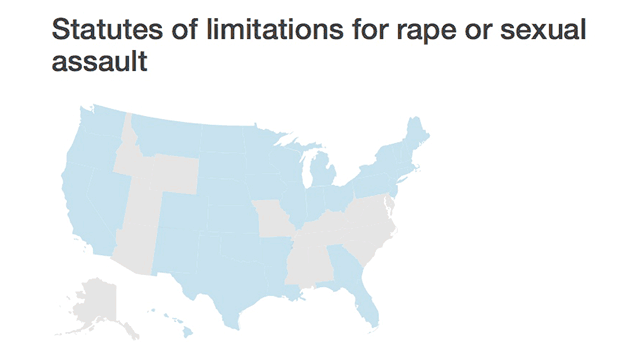At the center of Rolling Stone‘s searing investigation into sexual assault at the University of Virginia is a disturbing recounting of a drunken gang rape at a frat party. Skeptics have suggested that that particular incident is too bad to be true, and some journalists have started to criticize the thoroughness of the reporting behind the article.
However, recent research shows that the broad contours of the environment described at UVA—where women report widespread sexual assault with no consequences for perpetrators—is not unique on America’s college campuses. As one expert told RS contributing editor Sabrina Rubin Erdely, “the depressing reality is that UVA’s situation is likely the norm.”
Some of the best data on the prevalence of rape and other forms of sexual assault on campus comes from a 2007 survey of nearly 5,400 undergraduate women at two large public universities. The study, funded by the Department of Justice’s National Institute of Justice, found “women at universities are at considerable risk for experiencing sexual assault.” (The study defined sexual assault as not only rape but other unwanted sexual contact.)
A 2009 follow-up study by the same researchers found that by the time they are seniors, 1 in 5 undergraduate women report experiencing sexual assault since they started college. (In contrast, 4 percent of the survey’s male respondents said that they’d been sexually assaulted in college.) That figure mirrors recent findings that 19 percent of women in the United States have been raped during their lifetimes.
The NIJ-funded study also examined the circumstances and risk factors surrounding sexual assault on campus, including the role of alcohol and fraternities. Nearly 60 percent of campus sexual-assault victims were under the influence of booze or drugs when they were attacked; one-fourth said their assailant was a frat member. Gang rapes like the one described in Rolling Stone appear to be relatively uncommon; most assaults involve a single assailant whom the victim previously knew.
Combined with findings from other studies on frats and rape prevention strategies, this data provides a overview of sexual violence on campus—and how rarely it is fully investigated.
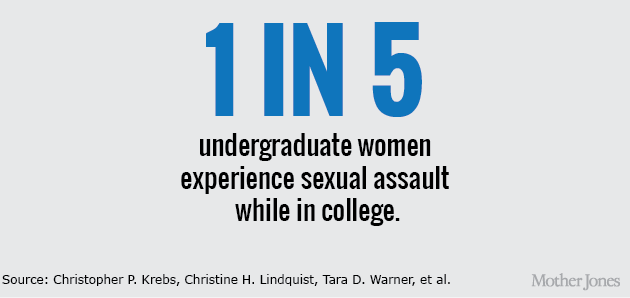
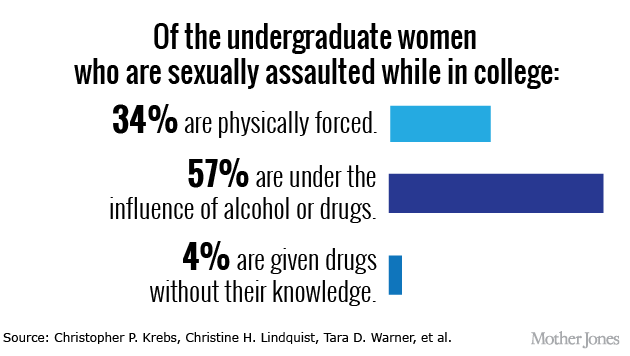
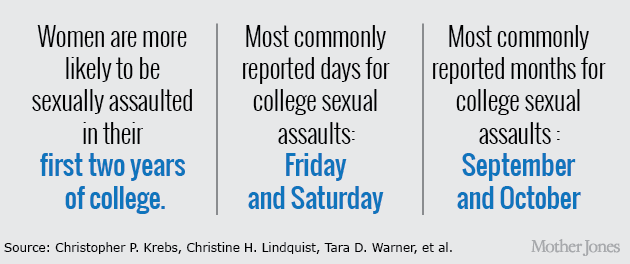
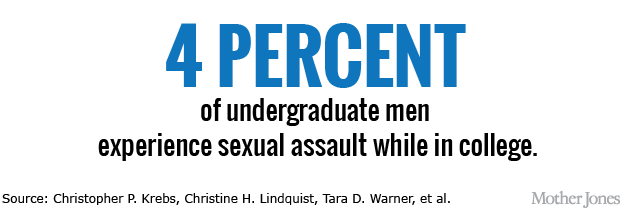
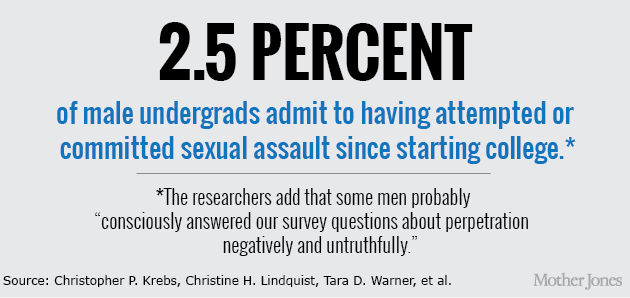
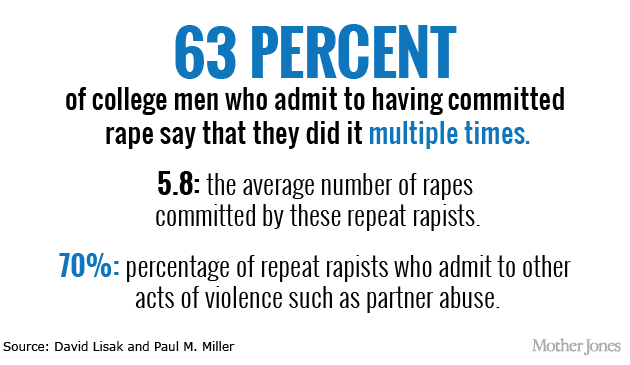
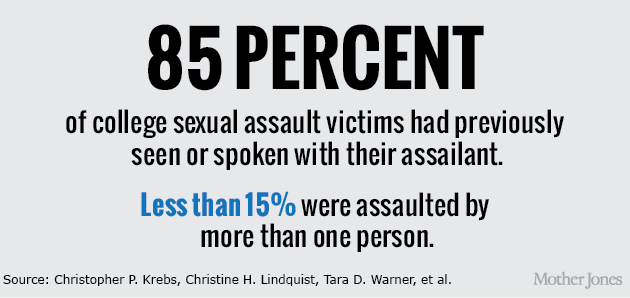

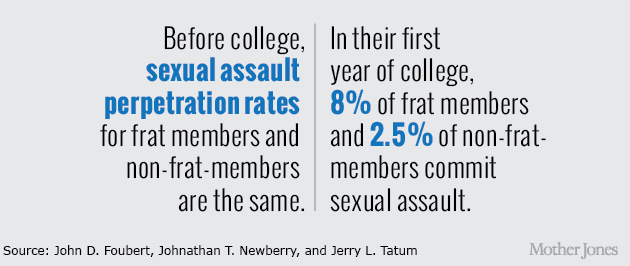
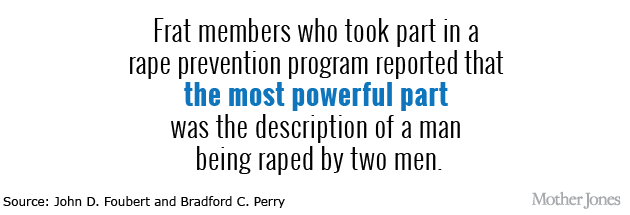
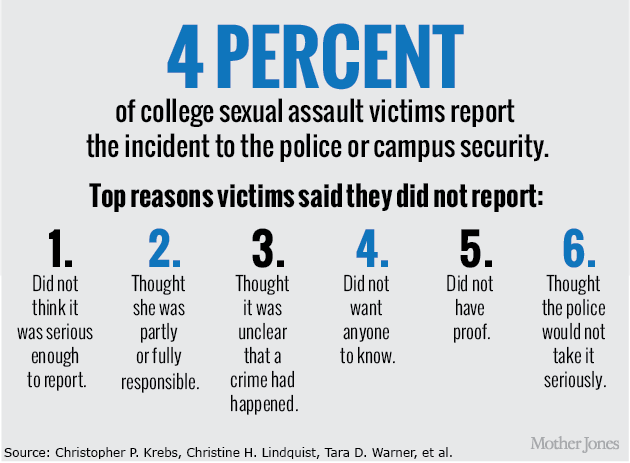
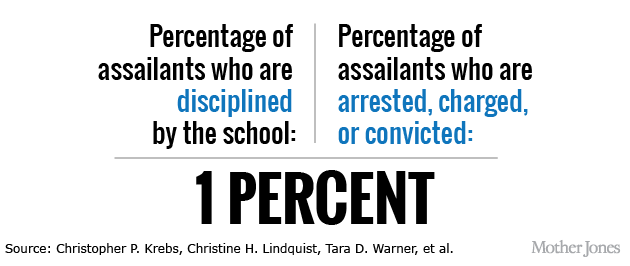
This article has been updated.
Sources
“1 in 5 undergraduate women…”: Christopher P. Krebs, Christine H. Lindquist, Tara D. Warner, Bonnie S. Fisher, and Sandra L. Martin; “College Women’s Experiences with Physically Forced, Alcohol- or Other Drug-Enabled, and Drug-Facilitated Sexual Assault Before and Since Entering College” (link)
“Of the undergraduate women who are sexually assaulted while in college…”: Christopher P. Krebs, Christine H. Lindquist, Tara D. Warner, Bonnie S. Fisher, and Sandra L. Martin for the National Institute of Justice; “The Campus Sexual Assault Survey” (PDF)
“Women are more likely to be sexually assaulted…”: “The Campus Sexual Assault Survey” (PDF)
“4 percent of undergraduate men…”: “The Campus Sexual Assault Survey” (PDF)
“2.5 percentof male undergrads admit…”: “The Campus Sexual Assault Survey” (PDF)
“63 percent of college men who admit…”: David Lisak and Paul M. Miller, “Repeat Rape and Multiple Offending Among Undetected Rapists” (PDF)
“85 percent of college sexual assault victims…”: “The Campus Sexual Assault Survey” (PDF)
“More than 1/4 of victims say…”: “The Campus Sexual Assault Survey” (PDF)
“Frat members who took part in a rape prevention program…”: John D. Foubert and Bradford C. Perry, “Creating Lasting Attitude and Behavior Change in Fraternity Members and Male Student Athletes” (PDF)
“Before college, sexual assault perpetration rates…”: John D. Foubert, Johnathan T. Newberry, and Jerry L. Tatum, “Behavior Differences Seven Months Later: Effects of a Rape Prevention Program” (link)
“4 percent of college sexual assault victims report…”: “The Campus Sexual Assault Survey” (PDF)
“Percentage of assailants who are disciplined…”: “The Campus Sexual Assault Survey” (PDF)
